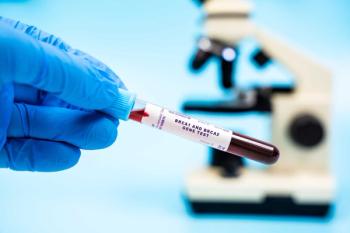
Contraction, Mortality Rate of COVID-19 Was Lower in Vaccinated Patients With PAH
Patients with pulmonary arterial hypertension (PAH) were more likely to die or be hospitalized if they contracted COVID-19 but were less likely to die from COVID-19 if they were vaccinated against SARS-CoV-2.
Patients with a diagnosis of
Patients with underlying health conditions, especially underlying health conditions that involved the respiratory system, have a higher risk of suffering from severe COVID-19. This observational, multicenter, cohort study was conducted to evaluate the relationship between patients with a diagnosis of PAH and the outcomes of COVID-19.
The was conducted from March 11, 2020, to March 11, 2022. Patients who were admitted to 3 pulmonary hypertension (PH) centers in Poland during this period were included (N = 364); all had . All patients had regular follow-ups and were in contact with the centers every 2 to 3 months during this time. None of the centers were focused on treating patients with COVID-19.
Patients were included if they had diagnosed PAH, were confirmed to have acute COVID-19 infection, and were 18 years or older. All clinical information was collected from their medical records. Patients were considered fully vaccinated at least 2 weeks after receiving the second dose of a COVID-19 vaccine or 2 weeks after receiving the single dose of the Johnson & Johnson vaccine.
Most patients in this study were femalepatients, and the median (IQR) age was 61 (42-73) years. The median (IQR) length of follow-up was 730 (601-730) days. Patients with PAH made up 66% of the participants, with the remaining 34% classified as having chronic thromboembolic pulmonary hypertension (CTEPH).
The researchers found that patients who were unvaccinated contracted COVID-19 more frequently than patients who were vaccinated (46% vs 9%). The risk of COVID-19 was lowered in patients with PAH and CTEPH who were vaccinated.
Twnety-three percent of the patients included contracted COVID-19 during the 2 years of this study, 38% contracted COVID-19 prior to the vaccination program, and 62% became ill when vaccinations were available and 26% when the Omicron variant appeared.
Prior to the vaccination program, 41% of patients who had COVID-19 needed to be hospitalized and 22% required intensive care unit (ICU) treatment. All patients who were moved to the ICU eventually died, and the overall mortality rate was 54% in patients with PAH or CTEPH. No patient required ICU admission after COVID-19 vaccinations, but 24.5% did need to be hospitalized.
A total of 33% of patients needed to be hospitalized in the unvaccinated group after vaccines became available, with 11% requiring ICU admission and later dying. No patients with a diagnosis of PAH or CTEPH who was vaccinated died during the postvaccination period.
There were some limitations to this study. The group studied was relatively small and was evaluated in a retrospective nature, and asymptomatic patients could have been omitted from this study due to only testing patients with clear symptoms. In addition, a study survival analysis may have been better than the logistic regression model used in this study.
The researchers concluded that patients with a diagnosis of PAH or CTEPH were well protected against COVID-19 if they were vaccinated, as unvaccinated patients with PH had a higher mortality risk and hospitalization rate compared with the general population.
Reference
Wieteska-Milek M, Kusmierczyk-Droszcz B, Ryczek R, et al. Outcomes of COVID-19 in patients vaccinated and unvaccinated against SARS-CoV-2 and suffering from pulmonary arterial hypertension and chronic thromboembolic pulmonary hypertension. Pol Arch Intern Med. Published online January 5, 2023. doi:10.20452/pamw.16406
Newsletter
Stay ahead of policy, cost, and value—subscribe to AJMC for expert insights at the intersection of clinical care and health economics.













































